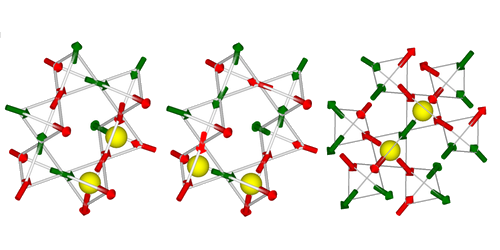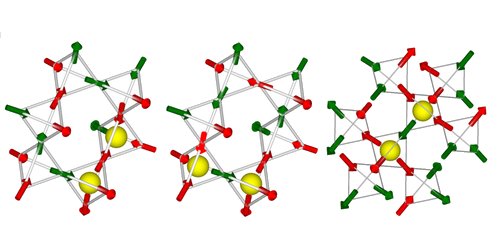The Signature of Magnetic Monopoles
Most magnets have north and south poles. One exception, however, is a quantum spin ice, a magnetic material that hosts excitations that behave like monopoles—tiny magnets with a single pole. While researchers know monopoles exist, they lack a firm prediction of their signatures in measurements. Masafumi Udagawa at Gakushuin University, Japan, and Roderich Moessner at the Max Planck Institute for Complex Systems in Germany have now calculated the neutron-scattering signature of pairs of monopoles in a quantum spin ice. The signature contains a set of sharp and asymmetric spectral features that the duo says should be experimentally accessible.
The structure of a perfect quantum spin ice is a network of triangular pyramids. For each pyramid, one spin is located at each of the pyramid’s four vertices, with two spins pointing inward and two pointing outward. Monopole excitations are pyramids with “defective” spin arrangements, where three spins point either in or out. These monopoles appear in pairs, but they propagate through the spin ice independently, as quantum fluctuations flip nearby spins.
The team calculated the impact of this phenomenon on the material’s neutron-scattering spectra. To do that, Udagawa and Moessner represented the spin ice in a so-called configuration space—a representation that maps out all the possible configurations of the system, taking into account the monopole’s position and the arrangement of all the other spins. The approach enabled them to include gauge field effects. These effects account for the monopole’s magnetic properties and are tightly coupled to the monopole’s motion. Using their model, the duo derived the neutron-scattering signal of moving monopoles in a spin ice, providing a reference for future experiments.
This research is published in Physical Review Letters.
–Nicolas Doiron-Leyraud
Nicolas Doiron-Leyraud is a Corresponding Editor for Physics.





